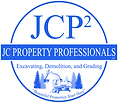
Home excavation projects can range in size from an entire basement, to a foundation for a garage or addition, to a small utility trench. Excavation may also be needed to create drainage space for waterproofing around your home’s foundation when flooding may be occurring. Whatever the project, as a homeowner you should know what an excavation is, as well as a few dos and don’ts for excavation projects even if you are not the one completing the job yourself.
What is an Excavation?
Excavation is described by OSHA as “any man-made cut, cavity, trench, or depression in the Earth’s surface formed by earth removal.” Cave-ins pose the greatest risk to workers and other potential hazards include falls, falling loads, and incidents involving mobile equipment. Trench collapses are the cause of dozens of fatalities and hundreds of injuries each year.
Excavation Dos
Do consult with a civil engineer who will create a site preparation plan to ensure that your project is completed as efficiently and safely as possible.
Do call 811 before beginning any excavation project. Calling 811 or visiting www.call811.com will provide the contact information for your local or government utility location service or dig line, which is completely free to use. This service will give you the locations of all underground gas, electric, water, sewer and communications pipes and cables in the area. By law you must call Dig Safe Line before beginning any excavation or digging project anywhere in the US.
Do hire a licensed contractor with the expertise to perform the excavation. Review the contractor’s website, take a look at all reviews on facebook, google and other social media platforms.
Do make sure that all the necessary permits have been obtained from your city or town’s building department.

Excavation Don’ts
Don’t enter an unprotected trench! Cave-ins can occur in a matter of seconds, and can cause serious or fatal injuries. According to OSHA, trench collapses is the cause of dozens of fatalities and hundreds of injuries each year.
Don’t allow heavy equipment near the excavation edges. Most protective systems, such as sloping are designed to support the weight of the soil, not the additional weight of heavy equipment. The equipment that is being used to dig the excavation should be placed as far away from the edge as possible and in the area least likely to collapse.
Don’t allow surcharge such as excess soil, other materials, etc. to be placed within 2 feet of the excavation edges. Not only can excess soil and materials increase the likelihood of an excavation cave-in, but these materials can fall into the excavation as well.
Do not allow work to occur under raised loads. This is common sense: keep all personnel from working under raised loads or directly near, which could fall and cause injury.
JC Property Professionals has the equipment and the experience for your excavation project, large or small. Contact JC Property Professionals for an expert consultation.

Comments